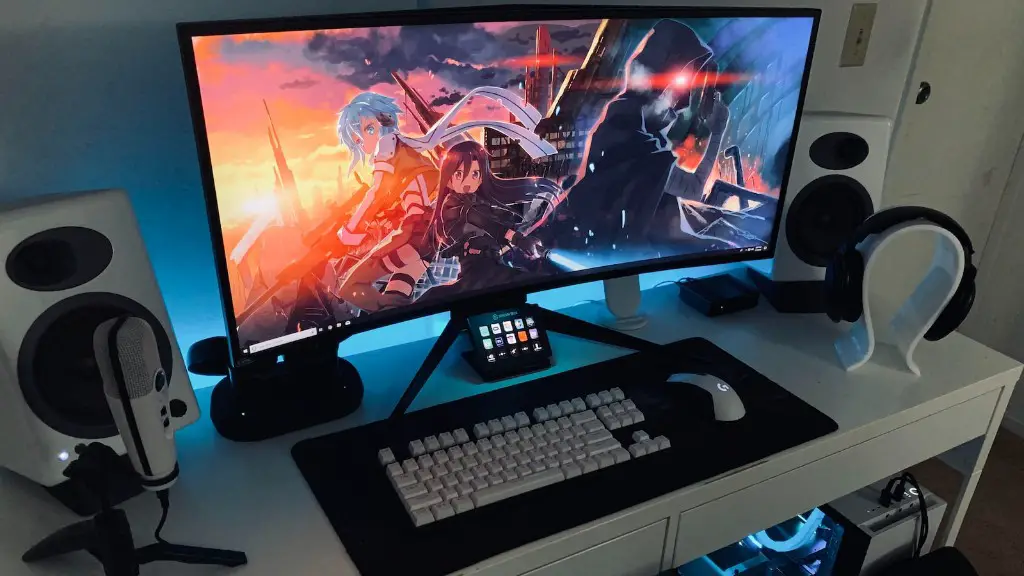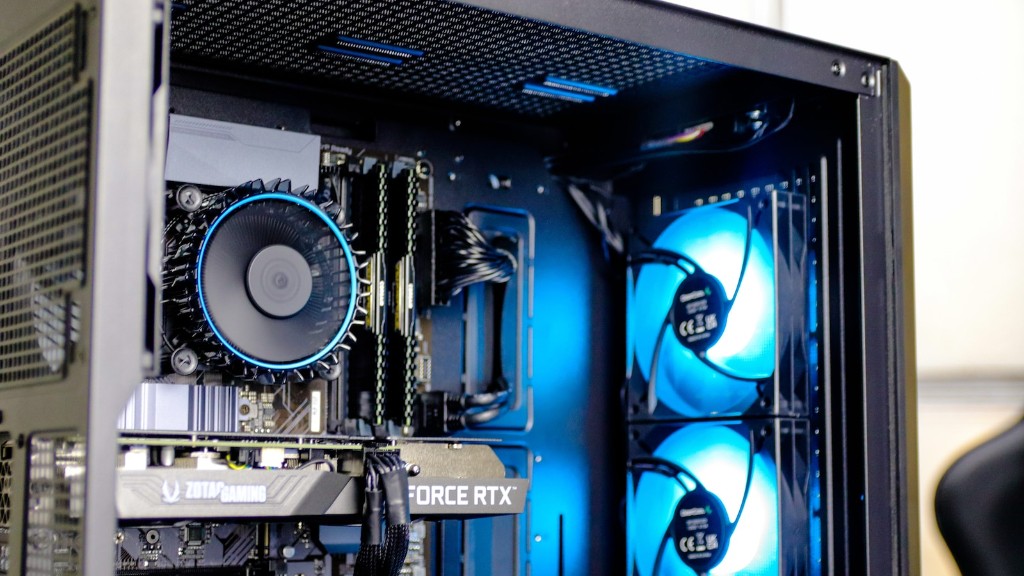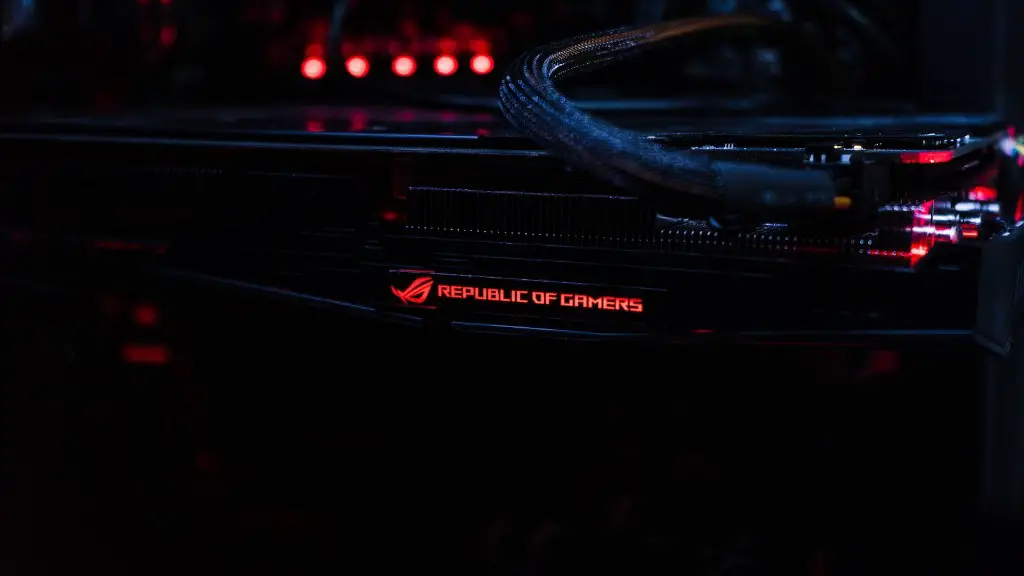The average size of a gaming monitor can vary from user to user depending on their preference and the type and resolution of the display. Generally speaking, gamers tend to prefer larger screen sizes for a better gaming experience. But what is the ideal size for you? Let’s take a look.
The most popular gaming monitor sizes range from 24 to 27 inches. Monitors within this size range offer a balance of affordability and performance. With a 24-inch monitor, you can get higher resolutions with excellent image quality. For those looking for more immersive experiences, 27-inch monitors provide a generous gaming display with a wider field of view. For 4K gaming, displays sized between 27 and 35 inches are recommended.
While the size of the gaming monitor is important, its type and resolution are also equally important. Different panel types provide different viewing angles, refresh rates, and response times. TN panels are the most affordable, while IPS panels offer more accurate colors and better viewing angles. Resolution is a major factor in image quality, with 4K and 1440p panels offering excellent visuals.
To get the best visuals from your gaming monitor, you should consider the type or display and resolution that best suits your gaming needs. For competitive gaming, TN panels with a higher refresh rate and response time are recommended. For more immersive gaming experiences, larger panels with 1440p or 4K resolutions are preferable.
No matter what size gaming monitor you choose, it’s important to consider your budget, as well as the type and resolution of the panel. Monitors between 24 and 27 inches are popular and deliver excellent performance at a reasonable cost. For more intensive work or gaming purposes, 4K resolution panels of 35 inches or above are recommended.
Gaming Vs Non Gaming Monitors
Non-gaming monitors are less expensive compared to gaming monitors, and mainly used for office or home purposes. Non-gaming monitors have fewer features than gaming monitors, and they provide fewer connections ports, such as HDMI, USB, and DisplayPort. Gaming monitors offer robust features like higher refresh rates and improved response times, which greatly improve gaming performance.
Furthermore, gaming monitors support FreeSync and G-Sync technology for improved frame rates and smoother gaming. They provide smooth visuals during fast-paced gaming, resulting in a better overall gaming experience. Gaming monitors also offer excellent color accuracy allowing players to get accurate colors on-screen.
Factors To Consider When Buying A Gaming Monitor
When buying a gaming monitor, there are several factors to consider. The size of the monitor, the panel type and resolution, and the refresh rate and response time should all be taken into consideration. Additionally, the type of connectors and video inputs the monitor supports should be taken into account, as well as the price.
Price is an important factor, as most gamers have a limited budget. However, it’s important to note that quality monitors cost more. So, buyers should determine which features they need, and then go for monitors that offer the features they need at the best price. Finally, gamers should also consider the type of content they play. MOBA, FPS, and strategy genres have different requirements so buy a monitor depending on the type of game they play.
Connection Ports, Refresh Rate & Response Time
Connection ports are a very important factor to consider when buying a gaming monitor. Most monitors have HDMI, USB, and DisplayPort ports to provide multiple connection options for peripherals. The refresh rate and response time should also be taken into account, as these are important features for competitive gamers.
Higher refresh rates and response times ensure smooth gameplay. Monitors with the latest technologies such as FreeSync and G-Sync offer improved gaming performance. Finally, the type of panel should also be considered, as TN panels are the most affordable while IPS panels offer better colors and viewing angles.
Display Control Features & Response Time
Many modern gaming monitors come with additional display control features. These features can be used to adjust brightness, contrast, gamma, and other display properties. Some monitors even come with pre-calibrated settings for different gaming genres. This allows for greater flexibility and customization for gamers of all skill levels.
Another important feature to consider is the response time. Response time is an indication of how quickly a display can change from one color tone to the next. Quad-rate gaming displays offer the best response time, while non-gaming monitors tend to have longer response times. This feature is essential for competitive gaming, as it ensures smooth gameplay.
Curved Vs Flat Monitors
When it comes to gaming monitors, the choice between curved and flat screens depends on the user’s preference. Curved monitors are often preferred because they offer an immersive viewing experience and provide better picture quality. However, curved monitors are more expensive compared to flat monitors, and they may not fit in all gaming setups.
On the other hand, flat monitors provide a better field of view for color-critical work and come at a lower price. Flat monitors are also slimmer and often lighter, so they are easier to move around. As such, it is important to consider the pros and cons of both curved and flat monitors to determine which is best for you.
Mounting & Ergonomics
Mounting options and ergonomics are important aspects to consider when buying a gaming monitor. It is important to choose the right mounting arms or stand to make sure the monitor is safely and comfortably positioned at the right height and distance. Some gaming monitors come with pre-installed stands or mounts, while others allow users to choose their own.
Moreover, ergonomic stands can provide adjustable height and tilt, while some also have a swivel feature to allow users to turn their screens easily to take advantage of the best viewing angles. Furthermore, monitor arms and stands can be attached to gaming desks or tables, providing a more seamless gaming setup. As such, it is important to consider your ergonomic needs when buying a gaming monitor.



